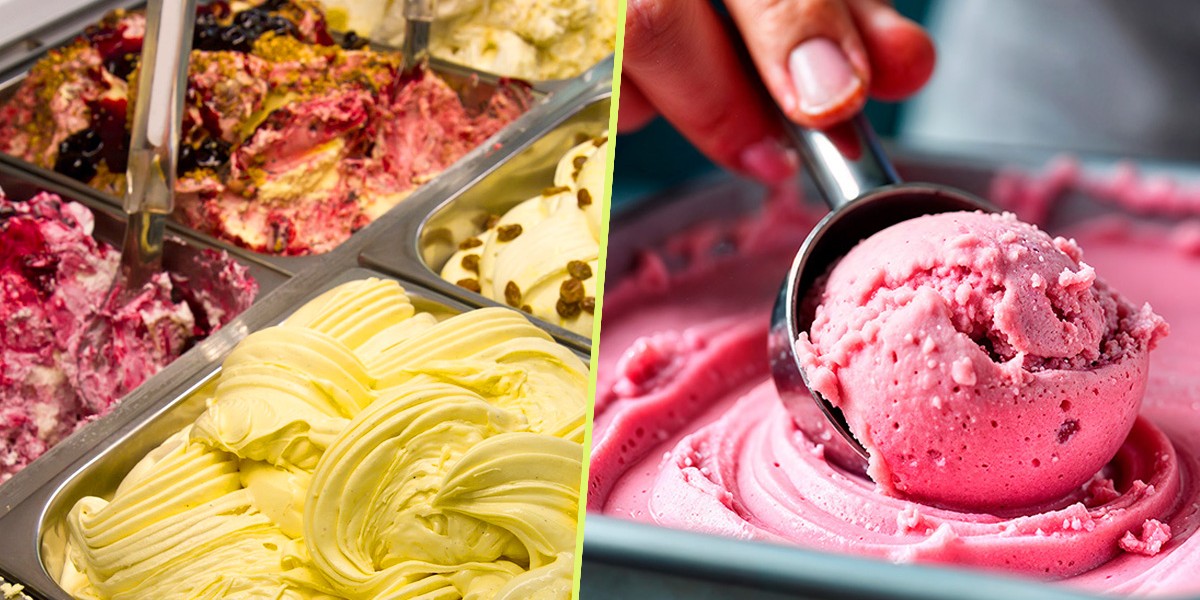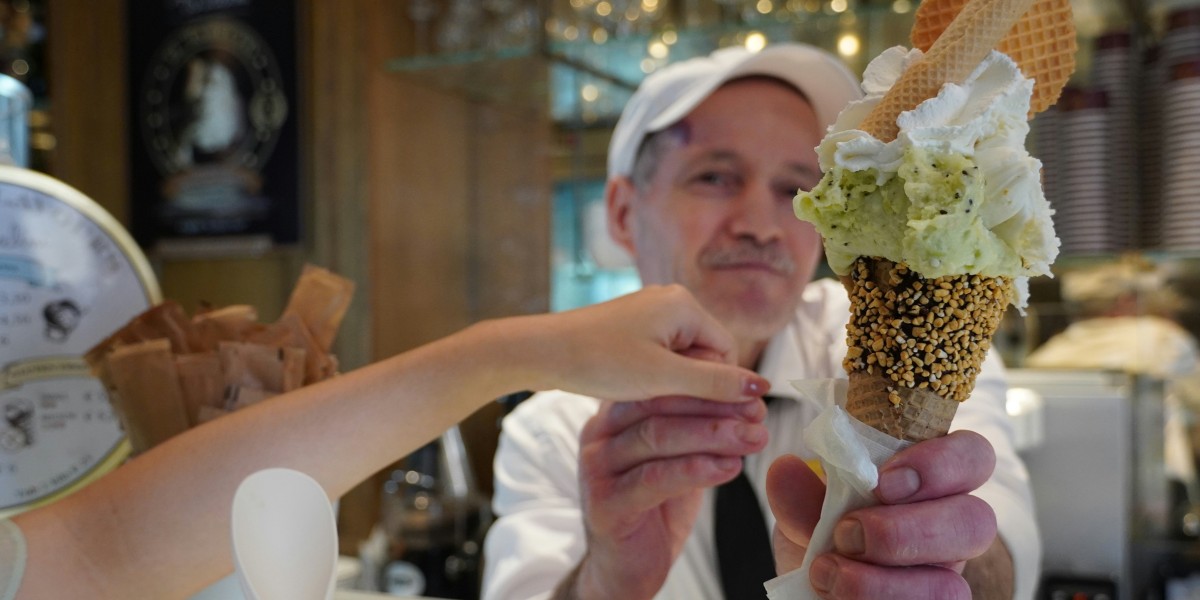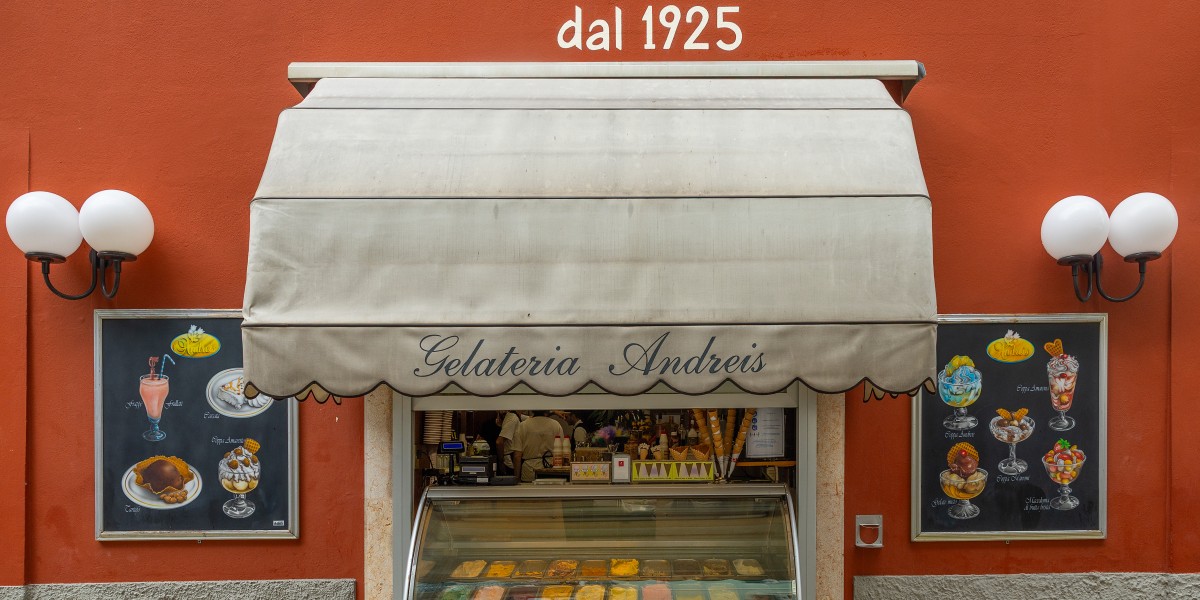
Strolling through a sunny Italian piazza, it’s easy to think that gelato is just the local word for ice cream. The debate of gelato vs ice cream, however, goes far beyond a simple translation. The real distinction between a scoop of traditional ice cream and a silky paddle of authentic Italian gelato comes down to the ingredients, the unique way it’s made, and even the temperature it’s served at.
Italian gelato vs ice cream: main differences
At a glance, the core differences can be broken down into five key areas. Think of it as a recipe with slightly different ingredients and a completely different cooking method.

- Fat: gelato uses more milk and less cream, while ice cream has a much higher butterfat content.
- Air: gelato is churned slowly, making it dense. Ice cream is churned faster, whipping in more air, which makes it lighter.
- Sugar: gelato often has a higher sugar content, which acts as a natural anti-freeze and keeps it soft.
- Eggs: some gelato recipes use egg yolks, but typically fewer than custard-based ice creams.
- Temperature: gelato is served at a warmer temperature, which is why it has that classic soft, silky texture.

Fat content: why gelato uses milk and ice cream uses cream
Proper ice cream is cream-based and legally needs to have a higher percentage of butterfat. Gelato, on the other hand, relies on a base of whole milk, resulting in a much lower fat content. This is one of the main reasons the flavour in gelato can feel more direct and intense, as there's less fat coating your palate.
Air content ('overrun'): the reason gelato is denser
Ice cream is churned at a high speed to whip plenty of air into the mixture—a process known in the industry as 'overrun'. This can sometimes double its volume, giving it a light, fluffy consistency. Gelato is churned at a far slower pace. This incorporates much less air, creating a denser, silkier, and more concentrated product.
Serving temperature: why gelato has a softer texture
You’ll never see a proper gelateria serving rock-hard scoops. Gelato is stored and served at a warmer temperature than ice cream. This keeps the texture soft and elastic. The flavours hit your taste buds immediately as your mouth isn't quite so numbed by the cold. It’s why gelato is served with a flat paddle, known as a spade, rather than a traditional rounded scoop.
Italian ice cream vs gelato taste: which has a bolder flavour?

Because gelato has much less fat and isn't fluffed up with air, the flavours are incredibly direct and punchy. With less cream coating your palate, a scoop of pistachio gelato tastes intensely of roasted pistachios, and a lemon one is properly sharp and zesty. This focus on pure flavour is especially noticeable with darker options. Many classic Italian chocolate desserts celebrate that rich, deep cocoa taste in the same way a good fondente gelato does.
This philosophy is a cornerstone of Italian food, where the focus is always on high-quality ingredients. You can see this dedication in the most popular 'ice cream' flavours in Italy, which usually celebrate simple, powerful notes like fresh fruit, rich nuts, or deep chocolate.
Is gelato healthier than ice cream?
Many people assume gelato is the healthier option, and in some ways, they're right. Because it's made with more milk than cream, it generally contains fewer calories and a lot less fat than a comparable serving of ice cream.
However, to keep its soft texture at a warmer serving temperature and prevent ice crystals from forming, gelato often has a higher sugar content. So, while you're saving on fat, you might be getting more sugar. Ultimately, the best way to enjoy it is as an occasional treat, no matter which one you choose.
Gelato vs sorbetto: understanding the difference

You'll often see sorbetto sitting right alongside the gelato flavours in a gelateria, and it's another thing entirely. The main difference is simple: sorbetto is completely dairy-free. Traditional sorbetto is made from just fruit puree (or juice), sugar, and water. It's a fantastic option if you're lactose intolerant or after something light and refreshing on a hot day.
These frozen treats are just the tip of the iceberg, as there are many more authentic Italian desserts to discover beyond the freezer aisle.
What is American-style ice cream called in Italy?
You'll struggle to find American-style ice cream in Italy. The culture is so completely dominated by artisanal gelato that there isn't really a market for it. If you were to describe it, an Italian might call it "gelato americano" or simply "ice cream," but it’s not something you'd find in a traditional gelateria. While you can get tubs of mass-produced, industrial ice cream in supermarkets that are closer in texture and fat content to the American version, it's considered a completely different product from the fresh, artisanal gelato that Italy is famous for.

Stay inspired for your travels in Italy—get our weekly newsletter for the latest travel, legal, and lifestyle news.
For a taste of the high life, sign up for the monthly luxury market round-up.
